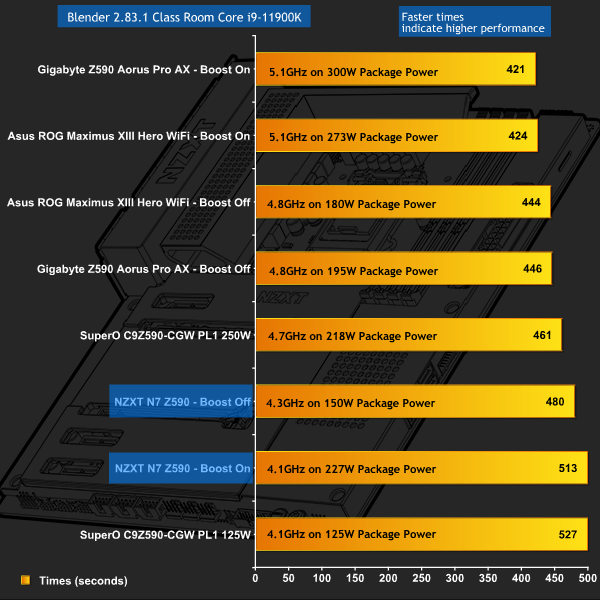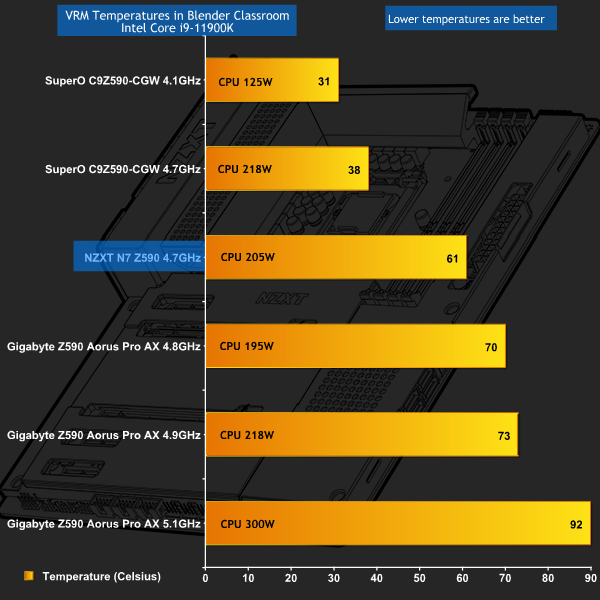Intel Adaptive Boost, AVX and VRMs
In Blender we see results that are entirely unexpected. Enabling Intel Adaptive Boost should increase clock speeds significantly, however in practice we see the opposite. This is clearly problematic, but the fact this lower performance is accompanied by raised Vcore and CPU power draw that goes up by 50 percent is little short of extraordinary.
Clearly it was possible there was some underlying hardware problem but we laid that theory to rest by monitoring the VRM temperatures and were satisfied the VRM coolers do a decent job.
Intel Adaptive Boost, AVX and VRMs Overview
It seems to us the BIOS imposes a significant AVX offset when Intel Adaptive Boost is enabled, and the result is performance that is truly horrible in these specific workloads. Changing the AVX in the BIOS pretty much fixes the problem and brings the power draw and clock speed back into line, so this must surely be something that ASRock and NZXT can easily fix. In the meantime we have to hope that customers who buy an NZXT Z590 motherboard are willing and able to make changes in the BIOS.
 KitGuru KitGuru.net – Tech News | Hardware News | Hardware Reviews | IOS | Mobile | Gaming | Graphics Cards
KitGuru KitGuru.net – Tech News | Hardware News | Hardware Reviews | IOS | Mobile | Gaming | Graphics Cards




